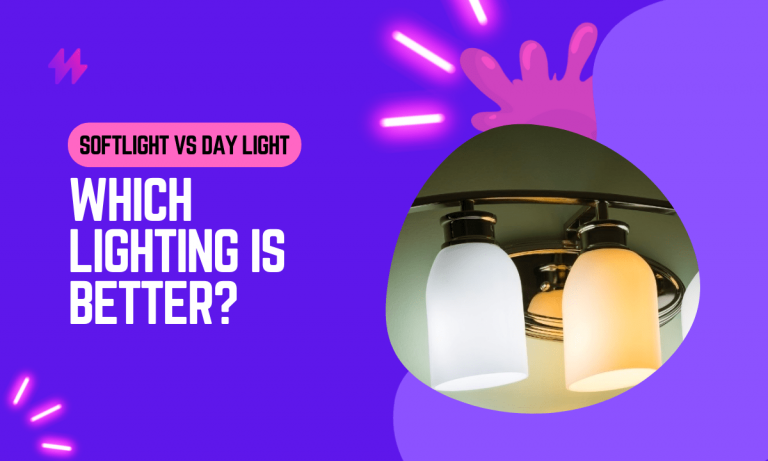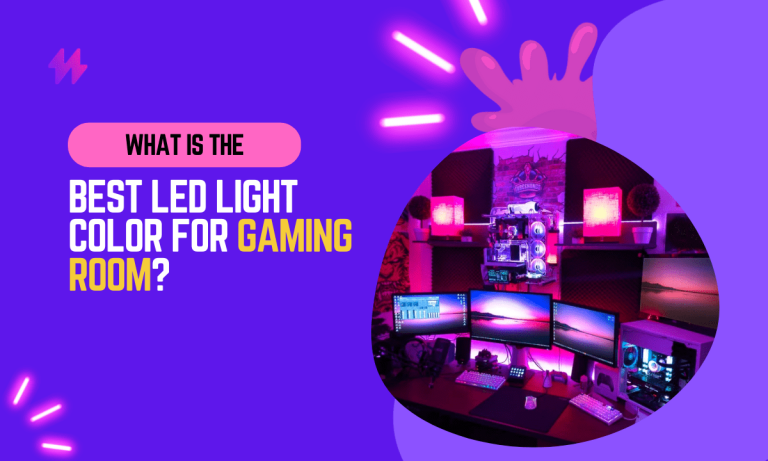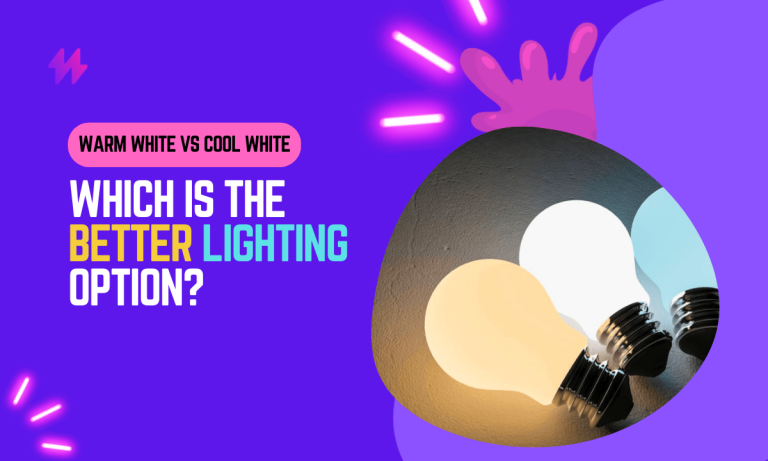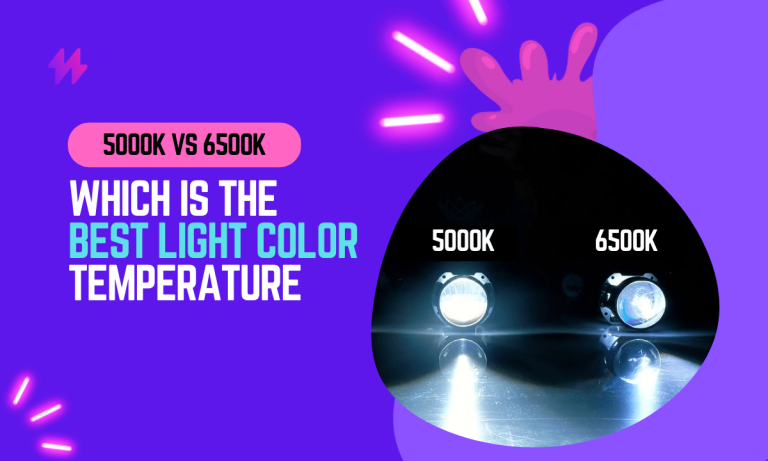How Bright is 300 Lumens? Your Lumens Brightness Guide
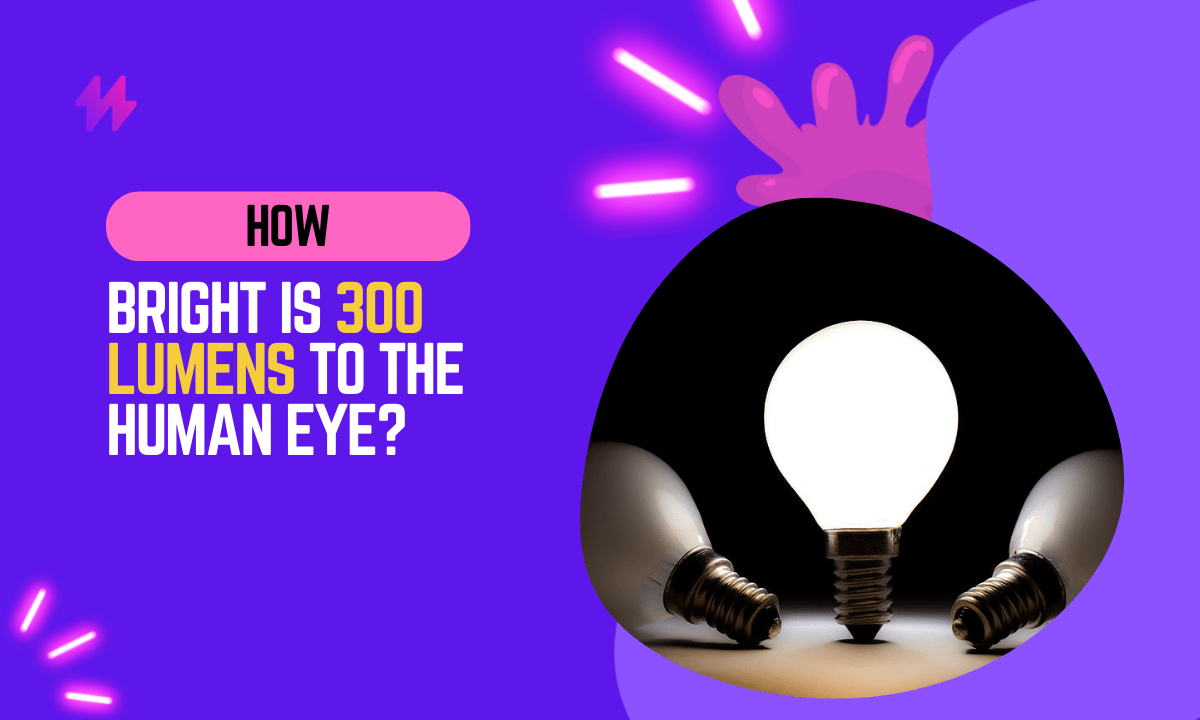
Lighting plays a crucial role in our daily lives, providing illumination, setting moods, and enhancing the overall ambiance of our surroundings. When it comes to evaluating the brightness of light sources, lumens are the key unit of measurement to consider.
In this blog post, we will look into the topic of how bright is 300 lumens truly. By exploring the concept of lumens and understanding their significance in determining brightness, we aim to shed light on the practical implications of this specific measurement.
While understanding lumens is essential, it’s equally important to consider their efficiency measured in lumens per watt. Different light bulbs exhibit various color temperatures that can significantly influence the atmosphere and mood of a space, underscoring the need for careful selection based on the desired effect.
Understanding How Many Lumens Define Brightness
Lumens serve as a standard unit of measurement to quantify the total amount of visible light emitted by a light source. Unlike other measurements like watts, which indicate power consumption, lumens focus solely on the brightness of the light produced.
In simple terms, lumens represent the total “brightness” or “light output” of a source. The higher the number of lumens, the brighter the light will appear to the human eye.
While lumens are widely used, it’s important to understand how they relate to other commonly used lighting measurements.
- Candlepower: Candlepower refers to the measurement of light intensity in a specific direction. It was commonly used in the past but has been replaced mainly by lumens. Lumens provide a more comprehensive measure as they account for light emitted in all directions.
- Lux: Lux measures the amount of light falling on a surface per unit area. It indicates the illumination level or brightness experienced by an object or a specific area. Lux is particularly useful when evaluating the lighting conditions in a specific space, while lumens measure the total light output of a source.
Also read: How to Change White LED Light to Yellow Color
To achieve the perfect balance in lighting design, it’s crucial to match the luminous intensity of fixtures with the purpose of the space. For instance, while a 300-lumen flashlight may provide an adequate beam of light for outdoor activities, locations requiring high ambient light may need solutions with higher lumen outputs like 800-1600 lumens for effective brightness.
Exploring Different Light Brightness Levels and Their Impact on Perceived Lumens
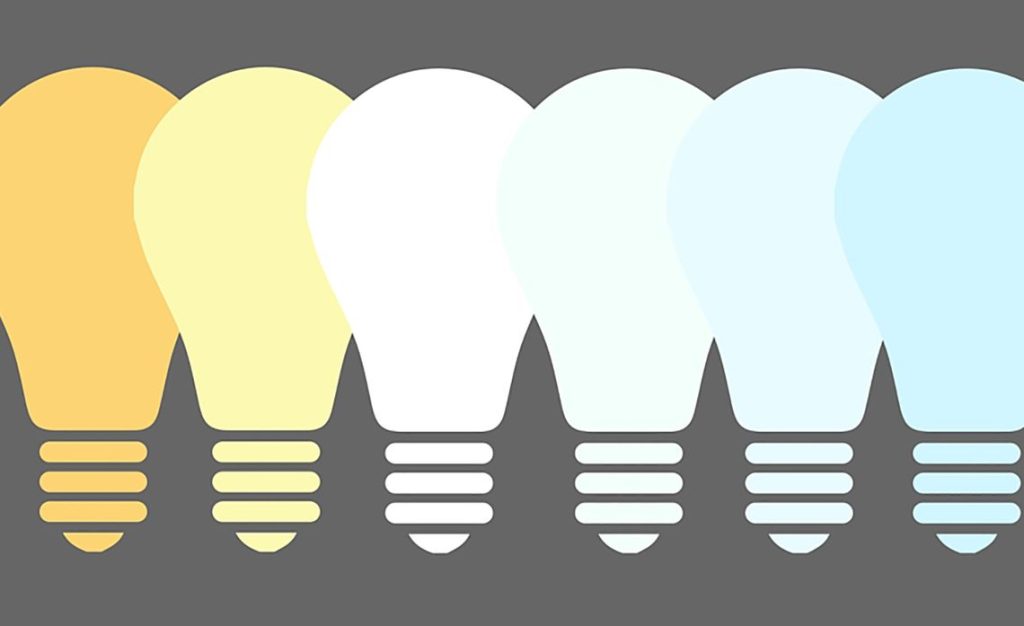
Lighting serves different purposes, and understanding the various levels of brightness required for different applications is essential. Here are three common levels of brightness:
When selecting the right lighting for your needs, it’s crucial to understand the specific lumen requirements for various applications. For example, a 300-lumen bike light would be ideal for nighttime rides, while areas needing bright task lighting may require total lumen outputs of 500-1000 lumens for optimal visibility.
Understanding Ambient Lighting: Exploring Brightness Levels and Perception
Ambient lighting provides overall illumination to a space. It ensures comfortable visibility without causing strain. Typically, ambient lighting requires a moderate level of brightness to evenly light up the area, allowing people to navigate and perform daily activities comfortably.
To enhance the effectiveness of ambient lighting, consider the total lumen rating necessary for the space. A well-designed 300-lumen lighting setup can create a pleasant atmosphere, while areas that require brighter task lighting may need solutions ranging from 300-500 lumens for optimal performance.
Understanding Task Lighting: Key Insights on Brightness and Lumens
Task lighting focuses on illuminating specific areas or tasks that require more concentrated light. Examples include reading, cooking, or working at a desk. Task lighting requires higher brightness levels to provide ample light for detail-oriented activities.
Selecting the appropriate task lighting involves considering both the specific lumen requirements and the color temperature that complements the activities being performed. A 300-lumen light source is effective for close-up tasks, while 700-1000 lumens may better serve areas such as kitchens or workspaces where detail work thrives.
Accent Lighting: Understanding Its Role in Illumination
Accent lighting adds visual interest and highlights specific objects or areas within a space. It creates a focal point or adds a dramatic effect. Accent lighting generally utilizes lower brightness levels to create contrast and enhance the ambiance of a room.
You may also like: LED Light Colors, What They Mean, And Where To Use Them
Accent lighting serves an essential function in enhancing the beauty and character of a room by drawing attention to specific features. When selecting appropriate light bulbs for accent lighting, it’s key to consider different color temperatures and brightness levels, as some applications may require higher lumen outputs, ranging from 200-800 lumens, to achieve the desired illumination effect.
Understanding Factors That Affect Perceived Brightness in Lighting
Several factors influence how we perceive the brightness of a light source:
Several factors influence how we perceive the brightness of a light source. For example, the color temperature of a bulb, measured in kelvin, can affect whether the light appears warm or cool, impacting the ambiance of the room. Additionally, using high-efficiency bulbs can significantly improve how many lumens are produced per watt, allowing for maximum brightness without consuming excessive power.
- Distance: The distance between the light source and the object being illuminated affects perceived brightness. As the distance increases, the intensity of the light diminishes, and the brightness appears to decrease. Conversely, reducing the distance enhances the perceived brightness.
- Angle: The angle at which the light is emitted and the direction in which it falls on a surface affect how we perceive brightness. Light directed straight at an object tends to appear brighter than light coming from an angle.
- Light Source Efficiency: The efficiency of the light source, such as LED or incandescent bulbs, influences the perceived brightness. More efficient light sources can produce higher lumens per watt, resulting in a brighter output for the same amount of power consumed.
Understanding the Brightness of 300 Lumens: Key Insights
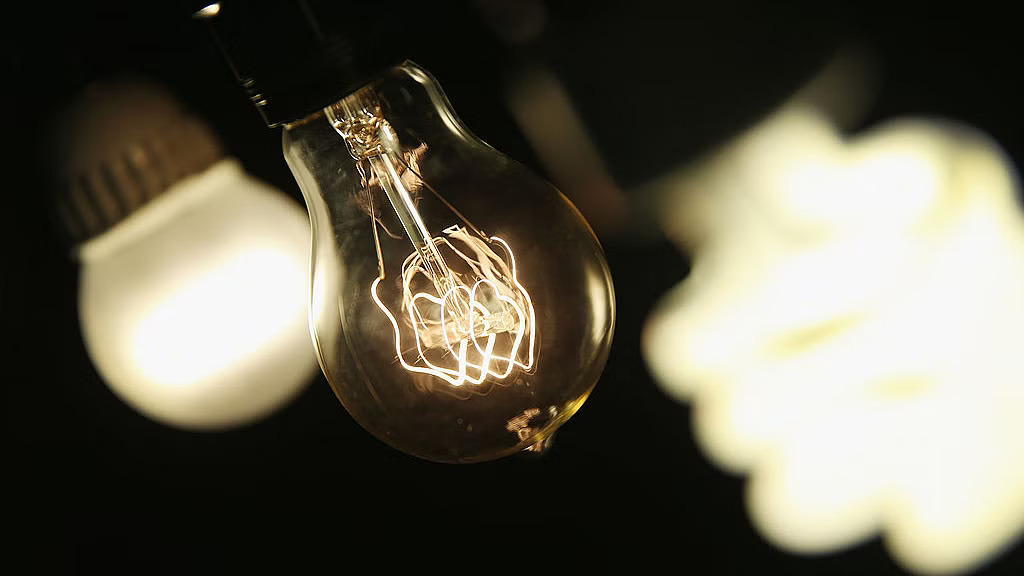
Lumens serve as a unit of measurement for brightness, and each lumen represents the intensity of light equivalent to that of a single candle. Therefore, when we refer to 300 lumens, we are describing a level of brightness comparable to the combined radiance of 300 candles.
Contextualizing 300 lumens in everyday examples.
A 300-lumen light is ideal for applications requiring a subtle glow, making it perfect for intimate settings like living rooms or bedrooms. In contrast, for areas that need to be brightened significantly, providing high lumen output between 1000-1600 lumens ensures ample illumination for activities that demand greater visibility.
Incandescent Bulbs: Understanding How Bright Is 300 Lumens
Traditional incandescent bulbs, commonly used in household lighting, typically range from 40 to 100 watts. A 40-watt incandescent bulb produces approximately 450 lumens, while a 60-watt bulb emits around 800 lumens. Therefore, 300 lumens can be considered equivalent to the brightness of a lower-wattage incandescent bulb, providing a moderate illumination level.
While traditional incandescent bulbs vary between 40 to 100 watts, their lumen output is an important metric for determining brightness. For example, those requiring a bright light might consider opting for bulbs that provide 400-800 lumens to illuminate their space effectively, especially for industrial lighting applications. Moreover, understanding how useful lumens measure contributes to making informed choices about which bulbs to choose for various settings.
Understanding Flashlights: Exploring Light Brightness and Lumens
Flashlights often specify their light output in lumens. Basic handheld flashlights usually range from around 50 to 300 lumens, with 300 lumens considered on the higher end for standard consumer flashlights. It provides sufficient brightness for general outdoor use, such as camping or walking in dimly lit areas.
Flashlights often specify their light output in lumens. Basic handheld flashlights usually range from around 50 to 300 lumens, with 300 lumens considered on the higher end for standard consumer flashlights. It provides sufficient brightness for general outdoor use, such as camping or walking in dimly lit areas. For tasks requiring a high beam, choosing a flashlight within the 200-400 lumens range can dramatically improve visibility. Additionally, understanding the differences in lumen outputs, such as those between 100-300 lumens and 300-700 lumens, helps users select a flashlight that meets their lighting needs effectively.
LED Bulbs: Understanding Brightness and Lumens
LED bulbs have gained popularity due to their energy efficiency and long lifespan. A typical 5-watt LED bulb produces approximately 450 lumens, which is equivalent to the brightness of a 40-watt incandescent bulb. Therefore, 300 lumens can be considered slightly dimmer than a typical LED bulb but still provides a noticeable amount of light.
LED bulbs have gained popularity due to their energy efficiency and long lifespan. A typical 5-watt LED bulb produces approximately 450 lumens, which is equivalent to the brightness of a 40-watt incandescent bulb. Therefore, 300 lumens can be considered slightly dimmer than a typical LED bulb but still provides a noticeable amount of light. For effective illumination, many bulbs rated between 200-300 lumens are ideal for ambient settings, achieving comfortable lighting levels. Additionally, using high-efficiency bulbs allows for a significant reduction in energy consumption while still providing the same lumen output as traditional incandescent bulbs.
Compact Fluorescent Lamps: Understanding Lumens and Light Brightness Levels
CFLs are another energy-efficient lighting option. A CFL with a power consumption of around 7 to 9 watts can produce approximately 300 lumens. This indicates that 300 lumens are equivalent to the brightness of a compact fluorescent lamp of moderate wattage.
Also read: Warm White vs Cool White Lighting: Which is Better?
CFLs provide a considerable energy-saving advantage over traditional incandescent options. Additionally, for applications requiring less illumination, bulbs rated in the range of 50-100 lumens can effectively brighten intimate spaces without overwhelming brightness.
Is 300 Lumens Bright Enough? Understanding Light Brightness Levels
In general, 300 lumens can be considered moderate to moderately bright. It provides enough illumination for certain tasks and smaller spaces but may not be sufficient for larger areas or tasks that require high levels of brightness.
For comparison, a typical 40-watt incandescent bulb produces around 450 lumens, while a 60-watt bulb emits around 800 lumens. Therefore, 300 lumens can be considered somewhat dimmer than these common household bulbs.
However, it’s important to note that brightness perception can vary based on individual preferences, the purpose of the lighting, and the environment in which it is used. In some cases, 300 lumens may be suitable and provide ample brightness, while in other situations, it may be perceived as too dim.
You may also like: How To Read Bulb Base Size and Type?
When choosing lighting solutions, it’s also helpful to consider that 50-300 lumens can suffice for specific tasks, while larger areas may require higher outputs for effective illumination. Particularly in broader spaces or for detailed work, targeting options that produce lumens ranging from 1600-2400 lumens can significantly enhance the lighting experience.
Understanding the Wattage Required for 300 Lumens LED Lighting

The number of watts corresponding to 300 lumens in an LED bulb can vary depending on the efficiency and technology of the LED. LED bulbs are known for their energy efficiency, as they produce more light output (lumens) per watt compared to traditional incandescent bulbs.
As a general guideline, an LED bulb that produces approximately 300 lumens typically consumes around 3 to 5 watts of power.
However, it’s important to note that LED technology continues to advance, and there are now even more efficient LED bulbs that can produce 300 lumens or more with lower power consumption.
If you are interested in determining the wattage based on different types of light sources and their lumen output, check out our Lumen to Watt Calculator. This tool will provide you with a convenient way to estimate the power consumption required to achieve a specific level of brightness, helping you make informed decisions when selecting lighting options.
For anyone considering energy-efficient lighting, it’s essential to look at how high-efficiency bulbs use fewer watts to produce the same lumen output as traditional incandescent options. Additionally, understanding the relationship between lumens and watts can aid in selecting the right lighting solution, whether comparing a typical light bulb to a more advanced LED option or determining the appropriate wattage needed for applications that brighten larger spaces or specific tasks.
Final Thoughts on Understanding Light Brightness and Lumens
In conclusion, understanding the brightness of 300 lumens is crucial for selecting the appropriate lighting for various environments and applications. A lumen is a unit of luminous flux and is a measure of the total quantity of visible light emitted by a source. The brightness level of 300 lumens is considered moderate; it is generally adequate for small, focused areas but not sufficient to illuminate large spaces effectively. For instance, 300 lumens can serve well in a bedside reading lamp, providing enough light for reading without causing strain or discomfort to the eyes. It can also be suitable for pathway lighting, small closets, or as accent lighting where ambiance rather than utility is the goal.
Moreover, when comparing lighting options, it’s essential to consider the specific needs of the space and the tasks being performed there. For larger spaces or where detailed tasks are carried out, such as kitchen counters or workspaces, more lumens would be necessary to ensure adequate visibility. Conversely, in areas designed for relaxation or conversation, like living rooms or dining areas, lower brightness might be more appropriate to create a welcoming and comfortable atmosphere. Understanding the concept of lumens and how it translates into real-world applications allows consumers to make informed decisions about their lighting solutions, optimizing both the functionality and the aesthetic appeal of their environments. This knowledge empowers individuals to tailor their lighting choices to their precise requirements, enhancing both the usability and enjoyment of their spaces.
How Bright Is 300 Lumens | Understanding the Application of 300 Lumens in Different Settings
Understanding the brightness of 300 lumens reveals its practical applications in various settings. How bright is 300 lumens? This level of brightness sits comfortably between lower outputs like 12-100 lumens and higher outputs that reach up to 1600-1700 lumens. For residential uses, 300 lumens can effectively illuminate spaces where a 100-watt incandescent bulb would typically be used, particularly in cozy corners or task lighting scenarios. It brightens up areas at a range of 2700-3000 kelvin, suitable for warm environments. In commercial settings, wall pack lights or landscape lights using 300 lumens provide efficient lighting solutions, as they deliver adequate visibility without overwhelming brightness, especially compared to brighter options like those producing 5000-6500 kelvin. This output works well in spaces that favor well-distributed light, striking a balance between energy efficiency and visibility.
How Bright is 300 Lumens | Residential Uses of 300 Lumens
A lighting level of 300 lumens can effectively illuminate various residential spaces. This brightness is ideal for rooms that require general lighting, such as kitchens and living rooms. Typically, a 25-watt incandescent bulb produces around 250 lumens, which showcases the efficiency of 300 lumens in offering more light than a standard bulb. In areas where soft ambient light is needed, such as bedrooms, a range of 50-185 lumens can provide a cozy atmosphere, while 120-180 lumens is suitable for reading or specific tasks.
Understanding how bright is 300 lumens also involves comparing it to other common light levels. For example, 100-200 lumens work well for hallways or accent lighting. In contrast, spaces needing brighter illumination, like work areas, may benefit from 75-100 watts, which can translate to around 700-1000 lumens. By considering these measurements, homeowners can determine how best to utilize 300 lumens for their specific needs while ensuring a comfortable and functional environment.
Commercial Uses of 300 Lumens
Commercial spaces often require a balance between sufficient lighting and energy efficiency. How bright is 300 lumens can be a suitable measure for areas such as offices and retail stores. Many commercial applications utilize fixtures emitting 300 lumens to provide effective ambient lighting without overwhelming the space. This level of brightness is roughly equivalent to the light produced by incandescent bulbs using 40-60 watts, making it a practical choice for smaller rooms or work areas.
In larger commercial settings, 300 lumens can still be effective, particularly when combined with multiple light sources. For instance, using fixtures that emit 300 lumens per square foot can enhance visibility in waiting areas or showrooms. These setups allow businesses to maintain illumination levels while keeping energy consumption in check, as 300 lumens can also be achieved with LED options that draw only 15-25 watts. Understanding how bright is 300 lumens aids in making informed choices for various commercial lighting needs.
Comparing 300 Lumens to Other Common Brightness Levels
Understanding the brightness of 300 lumens requires a comparison with other common levels of illumination. Typically, 200 lumens provides a cozy glow, suitable for intimate settings, while 400 lumens makes spaces more vibrant and well-lit. To visualize the effectiveness of 300 lumens, one can consider the lumens per square foot (lumens/sq) in relation to incandescent watts. For instance, a standard 60-watt incandescent bulb generates about 800 lumens, which creates a brighter atmosphere than 300 lumens. How bright is 300 lumens for a workspace? This level can effectively illuminate tasks without overwhelming the space, thus striking a balance between comfort and functionality. Understanding these nuances helps in making informed decisions about lighting in various environments.
Comparing 300 Lumens to 200 and 400 Lumens
Understanding the difference between brightness levels can clarify how bright is 300 lumens. A light source emitting 200 lumens offers a softer glow, suitable for intimate settings such as bedrooms or reading nooks. In contrast, 400 lumens provides a more intense brightness ideal for workspaces or kitchens where clear visibility is essential. This variation in lumens lets consumers choose the right intensity for their specific needs, balancing comfort and functionality.
The concept of watts measure is often confused with lumens, but they represent different aspects of lighting. While watts measure energy consumption, lumens indicate brightness. To contextualize how bright is 300 lumens, consider that it sits squarely between the softer 200 lumens and the brighter 400 lumens. This makes 300 lumens a versatile choice, striking a balance for spaces that require neither subdued nor harsh lighting.
Brightness Comparison of 300 Lumens with Natural Light
Understanding how bright is 300 lumens provides an interesting perspective when compared to natural light. On a clear day, bright sunlight can reach levels of 100,000 lumens per square meter. In contrast, 300 lumens offers a significantly lower intensity, making it suitable for smaller spaces and specific tasks rather than full room illumination. This level of brightness is ideal for focused activities such as reading or working on detailed projects indoors.
Natural light varies greatly throughout the day, affecting our perception of brightness. Early morning and late afternoon light can feel much softer than the harsher midday sun. In this context, 300 lumens can mimic the soft illumination found during these times, creating a comfortable environment. Understanding how bright is 300 lumens sheds light on its role in enhancing indoor spaces without overwhelming users with excessive brightness.



